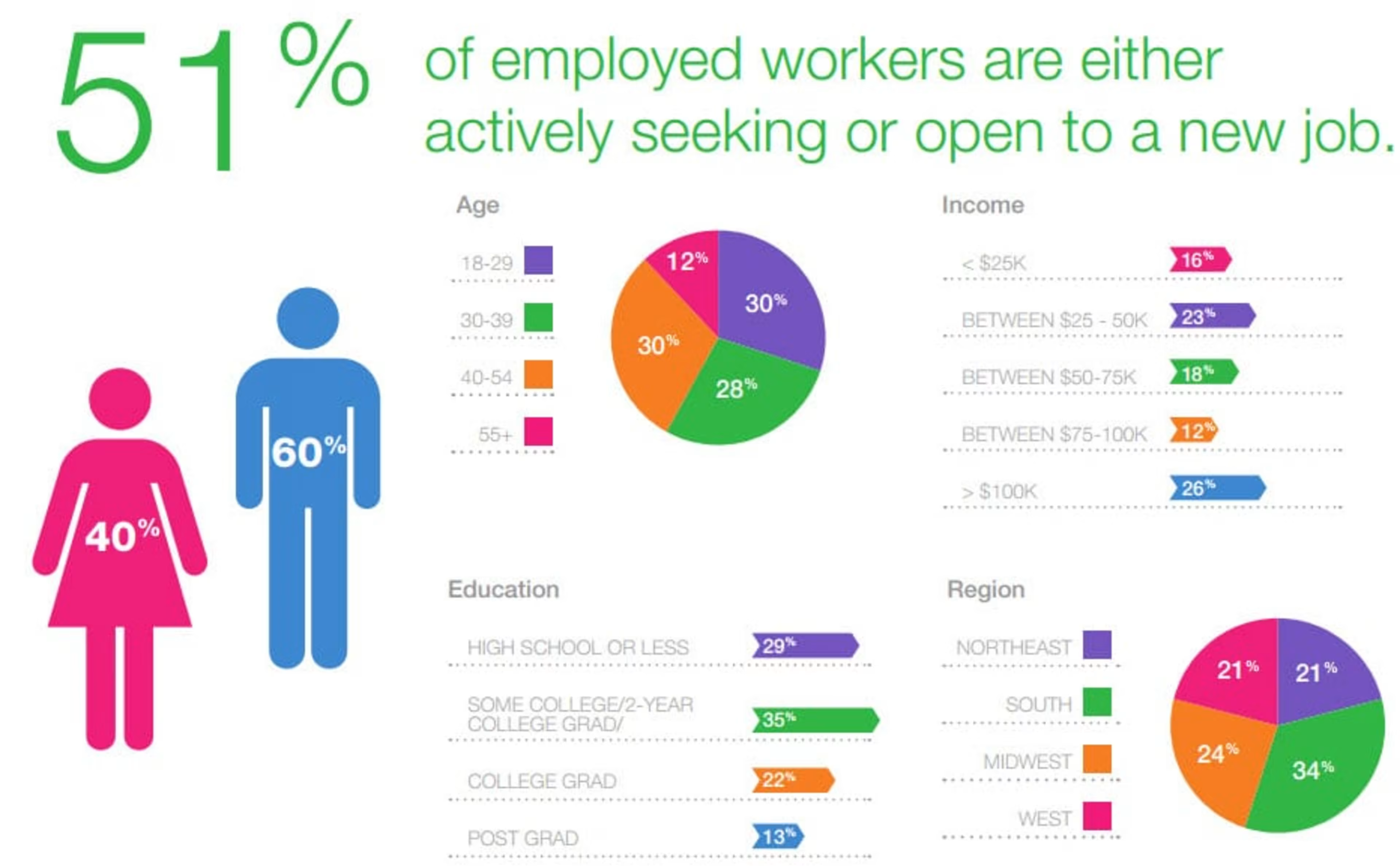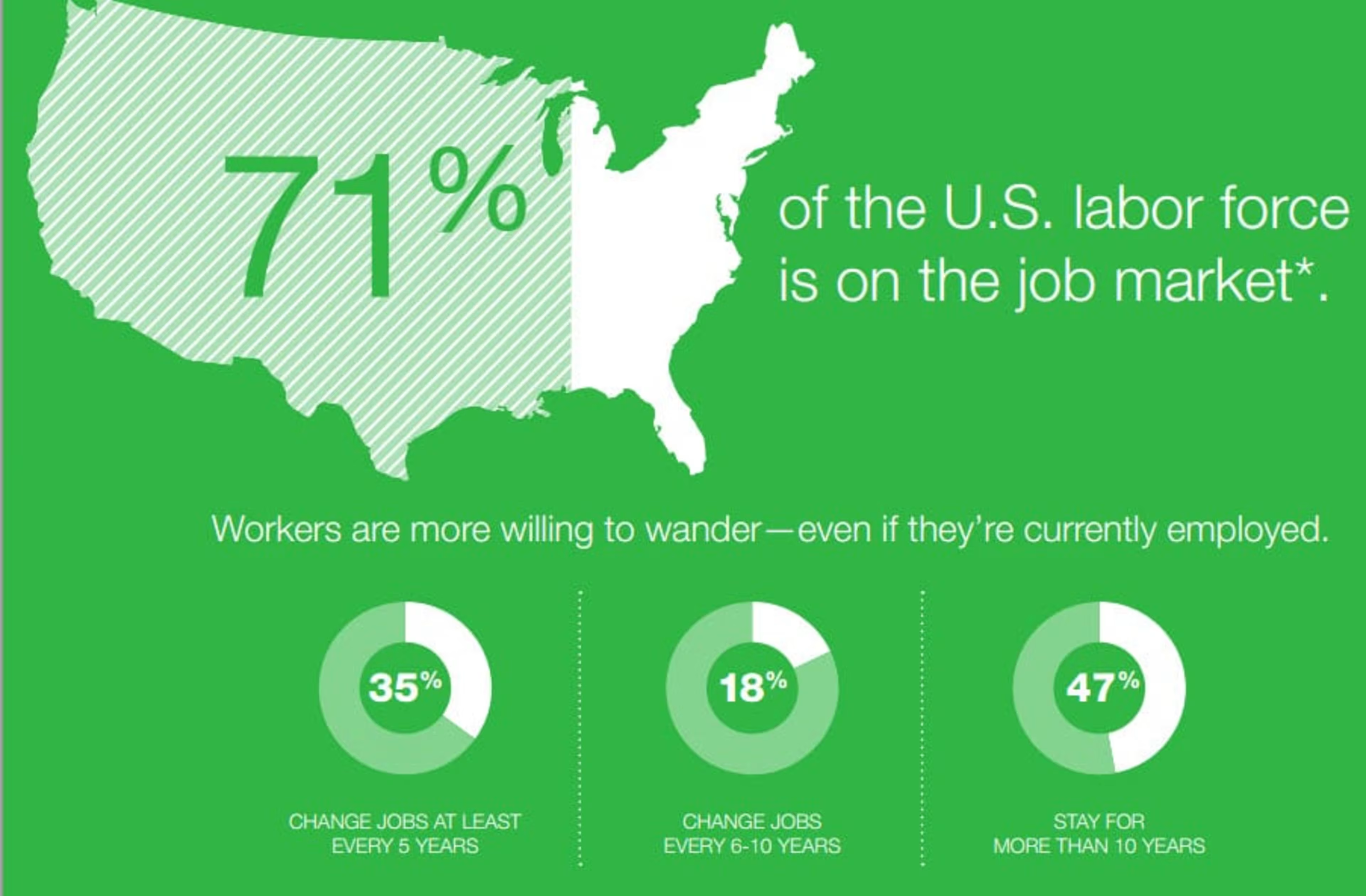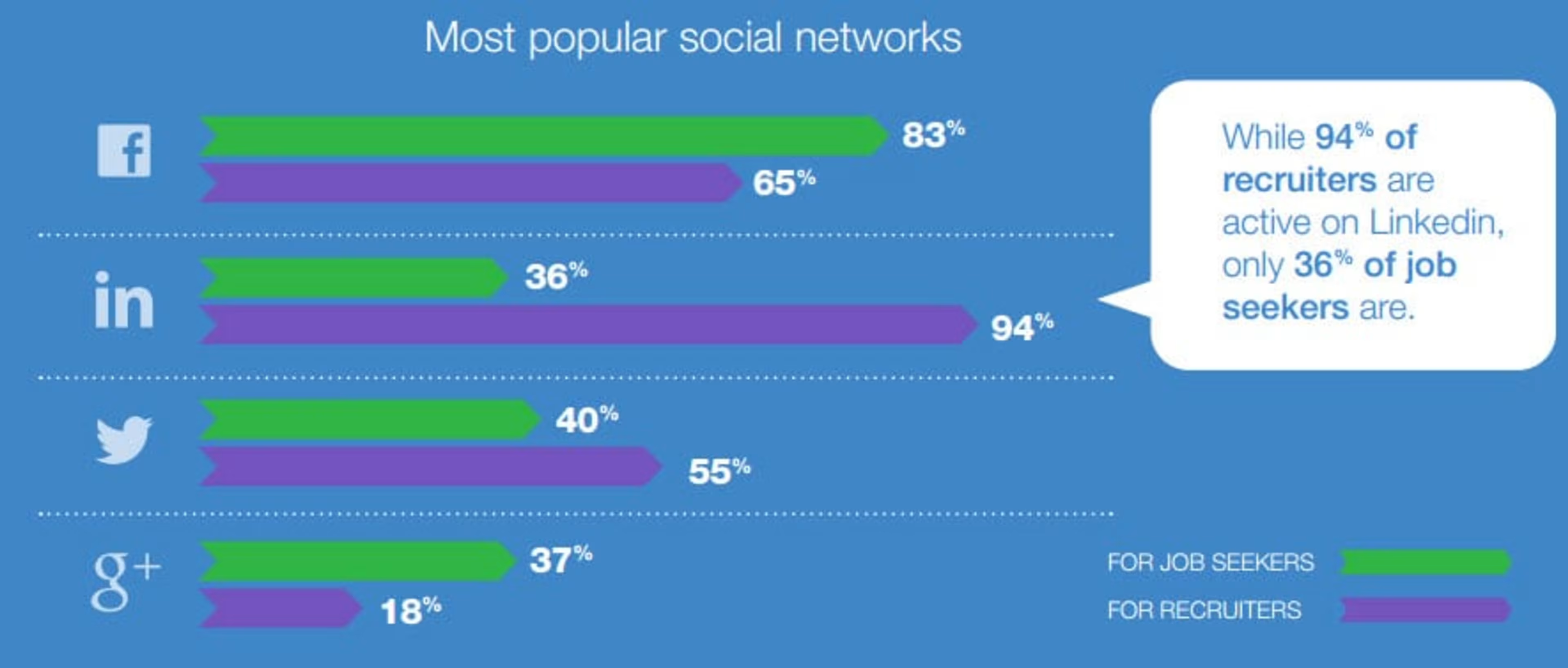The recruiting landscape continues to shift as companies adopt new software, tools, and methods for screening candidates, and millennials join the workforce in increasing numbers, bringing different ideas about what jobs are supposed to be, and how to apply to them.

Below are 15 shocking statistics detailing the changes occurring in the recruiting industry and among job candidates.
1. 94% of recruiters use, or plan to use social media for recruiting. This number has increased steadily for the last 6 years. (Source: Jobvite)<<Tweet this stat
2. Employers who used social media to hire found a 49% improvement in candidate quality over candidates sourced only through traditional recruiting channels. (Source: Jobvite)<<Tweet this stat
3. Millenials are changing the recruiting industry. An Aberdeen study found that 73% of 18-34 year olds found their last job through a social network. (Source: Aberdeen Group)<<Tweet this stat
4. Fully 30% of all Google searches, about 300 million per month, are employment related. (Source: Unbridled Talent) <<Tweet this stat
5. 89% of all recruiters report having hired someone through LinkedIn. Facebook and Twitter trailed by a wide margin, reaching only 26% and 15% respectively. (Source: Herd Wisdom)<<Tweet this stat

Source: Social Meep
6. While 94% of recruiters use social media for their jobs, only 39% of all employers use social media for recruiting and hiring. This is up from 37% the year before. (Source: CareerBuilder)<<Tweet this stat
7. LinkedIn users performed over 5.7 billion professionally-oriented searches on the network during 2012. The professional social platform has over 2.1 million different groups. (Source: LinkedIn) <<Tweet this stat
8. 51% of workers who currently have a job are either actively seeking, or open to a new job. This means fully 71% of all workers in the U.S. are “on the job market” (meaning unemployed and looking, employed and looking, or employed and open). (Source: Jobvite)<<Tweet this stat

Source: Jobvite

Source: Jobvite
9. 59% of recruiters rated candidates sourced from social networks as “highest quality.” But only 21% of candidates say they found their favorite or best job through a social network. (Source: Jobvite)<<Tweet this stat
10. 35% of millenials are optimistic about the job market, compared with just 11% of boomers. (Source: Jobvite)<<Tweet this stat
11. 94% of recruiters are active on LinkedIn, but only 36% of candidates are. Job seekers, by a wide margin, prefer Facebook, with 83% reporting they are active there, compared to just 65% of recruiters. (Source: Jobvite)<<Tweet this stat

Source: Jobvite
12. While only 27% of applicants expect to be able to apply to a job from their mobile device, 43% have used their mobile device to look for a job. (Source: Jobvite)<<Tweet this stat
13. Over 80% of Fortune 500 companies in the U.S. use psychometric testing (personality and aptitude tests) to profile job applicants. But only 27% of all hiring managers nationwide use such evaluations. (Source: Psychometric Success)<<Tweet this stat
14. Even though software continues to gain popularity and become less expensive for small to mid-size businesses, only 26% of employers use an applicant tracking system to manage their hiring process. (Source: Webrecruit)<<Tweet this stat
15. Companies that have formal candidate relationship processes (such as through software), and that track all their applicant communications, are 40% more likely to be “best in class”. (Source: Aberdeen Group)<<Tweet this stat
What other stats do you think are important as the hiring and recruiting industry transforms over the next few years? Add them in the comments below!